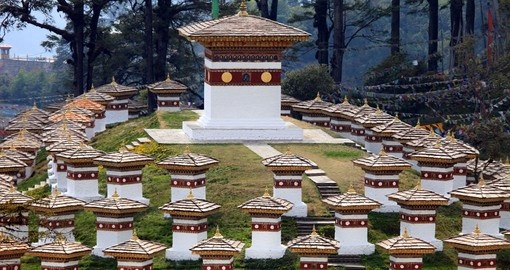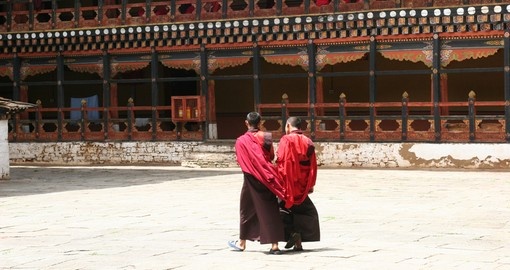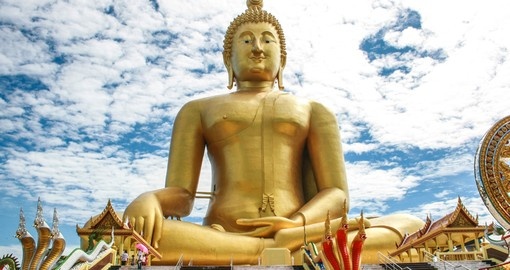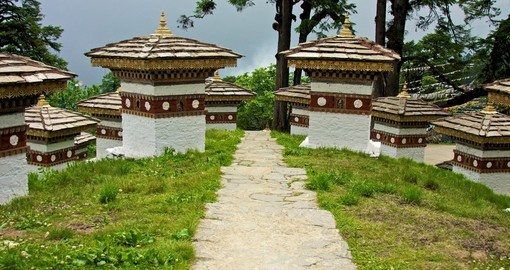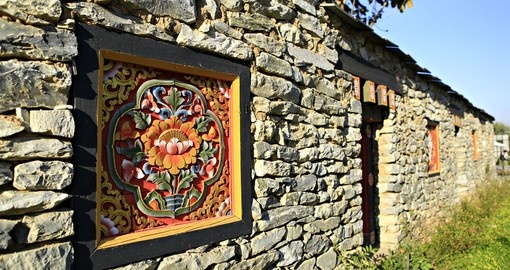Bhutan History
Not much is known about the history of Bhutan before the 8th century, however, archaeologists have been able to ascertain that Bhutan was inhabited as early as 2000 BC due to stone tools, weapons and structures that have been discovered. The first notable event of the 8th century in Bhutan was the arrival of the Indian saint Guru Padmasambhava in 746 AD. He was able to convert King Sendha, the ruler of the Bumthang Valley to Buddhism and gradually, the rest of the country followed. This alignment with Buddhism is still prevalent in Bhutanese social, political and cultural practices today.
The ninth and tenth centuries saw religious persecution strike northern Tibet at the hands of an anti-Buddhist king, King Langdarma. Many monks and religious leaders fled to Bhutan which had been recognized as a Baeyul (a sacred Hidden Land of Spiritual Treasures). They brought with them the teachings of several later schools of Buddhism which would go on to find followings in Bhutan.
Medieval Bhutan developed in stark contrast to Medieval cultures in other countries. It was feudalistic in nature, but Bhutan existed without the oppression and poverty that plagued other countries. There were three classes: the nobility, lay civil servants and farmers, but it was noted that there was a sense of equality in the country and in times of war all levels of the population fought together. Even the lowest part of society - the serfs - were allowed to marry and to own homes and were provided with food, shelter and clothing from the state. Democracy was also appearing as all officials, no matter what ranking, was elected by the public.
Bhutan developed in isolation from other countries for many centuries with few countries knowing of its existence. It appeared on very few maps and usually only as a reference to a country north of India. It was not until the 1770s that Bhutan came to the attention of Europeans. George Bogle of the Bengal Civil Service was sent on a mission to Tibet and unknown Bhutan by the East India Company in 1774. Bogle was detained for four months in Bhutan and during that time he began to understand that he was in a different country from Tibet with specific political, cultural and spiritual beliefs. Upon his return to Bengal, he wrote a report to the Governor General asking for Bhutan to be recognized as a country separate from Tibet. While Bogle is credited with “discovering” Bhutan, it was cartographer James Rennell who truly made it known to the rest of the world. Rennell was the First Surveyor General of the East India Company and the maps he prepared were the first to detach Bhutan from Tibet.
The second half of the 19th century saw the British attempting to incorporate Tibet into their territory. This posed a threat to the Bhutanese people, however, Penlop Ugyen Wangchuck, a political leader from Bhutan acted as a mediator between British India and Tibet and diffused the situation. This endeared him to a population that craved political stability and peace. In 1907, the clergy, the government and the people unanimously elected Penlop Ugyen Wangchuck as the first hereditary monarch of Bhutan. He brought a central authority to the country and laid the foundations for a modern Bhutan.
Those monarchs that followed continued Penlop Ugyen Wangchuck’s legacy and all maintained successful reigns. The 1970s saw Bhutan begin to open to the rest of the world and the country joined the UN in1971. While still very traditional (people in Bhutan are required by law to wear clothing styled after the 14th century), they are taking steps into modernity with access to television being granted in 1999 as well as internet access and even some tourism ventures. The fifth and current reigning king, Jigme Khesar Namgyel Wangchuck has placed great importance on ensuring democracy in Bhutan as well as striving for better standards in education, business and civil service.
Bhutan Travel Information
At Goway we believe that a well-informed traveller is a safer traveller. With this in mind, we have compiled an easy-to-navigate travel information section dedicated to Bhutan.
Learn about the history and culture of Bhutan, the must-try food and drink, and what to pack in your suitcase. Read about Bhutan's nature and wildlife, weather and geography, along with 'Country Quickfacts' compiled by our travel experts. Our globetrotting tips, as well as our visa and health information, will help ensure you're properly prepared for a safe and enjoyable trip. The only way you could possibly learn more is by embarking on your journey and discovering Bhutan for yourself. Start exploring...book one of our Bhutan tours today!
Extend Your Trip
After your Bhutan vacation, consider taking the time to visit other destinations. Goway offers exciting China vacation packages, India tours and Thailand vacation packages plus a comprehensive selection of vacation packages in many other Asian countries.
Book your Bhutan tour with Goway!
 ASIA by Goway is an exclusive division that specializes in planning and organizing Bhutan tours, vacations and experiences. Choose from a simple city stopover or see the country highlights when travelling on one of our independent travel modules. We want to be your first choice when next you go globetrotting to Bhutan.
ASIA by Goway is an exclusive division that specializes in planning and organizing Bhutan tours, vacations and experiences. Choose from a simple city stopover or see the country highlights when travelling on one of our independent travel modules. We want to be your first choice when next you go globetrotting to Bhutan.
Get a Trip Quote Order a Brochure







